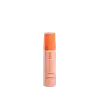What's inside
What's inside
 Key Ingredients
Key Ingredients

 Benefits
Benefits

 Concerns
Concerns

 Ingredients Side-by-side
Ingredients Side-by-side

Water
Skin ConditioningPropylene Glycol
HumectantDihydroxyacetone
Skin ConditioningGlycerin
HumectantAloe Barbadensis Leaf Juice Powder
Skin ConditioningDimethyl Isosorbide
SolventTerminalia Ferdinandiana Fruit Extract
AntioxidantEthoxydiglycol
HumectantCocamidopropyl Betaine
CleansingPEG-12 Dimethicone
Skin ConditioningPEG-7 Glyceryl Cocoate
EmulsifyingCaprylyl/Capryl Glucoside
CleansingArgania Spinosa Kernel Oil
EmollientSodium Hyaluronate
HumectantRosa Canina Fruit Oil
EmollientAscorbic Acid
AntioxidantSodium Lauroamphoacetate
CleansingPhenoxyethanol
PreservativeCaramel
Cosmetic ColorantSodium Metabisulfite
AntioxidantParfum
MaskingCitric Acid
BufferingCI 16035
Cosmetic ColorantCI 19140
Cosmetic ColorantCI 42090
Cosmetic ColorantWater, Propylene Glycol, Dihydroxyacetone, Glycerin, Aloe Barbadensis Leaf Juice Powder, Dimethyl Isosorbide, Terminalia Ferdinandiana Fruit Extract, Ethoxydiglycol, Cocamidopropyl Betaine, PEG-12 Dimethicone, PEG-7 Glyceryl Cocoate, Caprylyl/Capryl Glucoside, Argania Spinosa Kernel Oil, Sodium Hyaluronate, Rosa Canina Fruit Oil, Ascorbic Acid, Sodium Lauroamphoacetate, Phenoxyethanol, Caramel, Sodium Metabisulfite, Parfum, Citric Acid, CI 16035, CI 19140, CI 42090
Water
Skin ConditioningPropanediol
SolventDihydroxyacetone
Skin ConditioningButane
Propane
Isobutane
Polysorbate 20
EmulsifyingSaccharide Isomerate
HumectantCocamidopropyl Betaine
CleansingPEG-40 Hydrogenated Castor Oil
EmulsifyingCaprylyl Glycol
EmollientGluconolactone
Skin ConditioningDimethyl Isosorbide
SolventSodium Bisulfite
AntioxidantPhenoxyethanol
PreservativeSucrose Laurate
EmollientCitric Acid
BufferingIngredients Explained
These ingredients are found in both products.
Ingredients higher up in an ingredient list are typically present in a larger amount.
Citric Acid is an alpha hydroxy acid (AHA) naturally found in citrus fruits like oranges, lemons, and limes.
Like other AHAs, citric acid can exfoliate skin by breaking down the bonds that hold dead skin cells together. This helps reveal smoother and brighter skin underneath.
However, this exfoliating effect only happens at high concentrations (20%) which can be hard to find in cosmetic products.
Due to this, citric acid is usually included in small amounts as a pH adjuster. This helps keep products slightly more acidic and compatible with skin's natural pH.
In skincare formulas, citric acid can:
While it can provide some skin benefits, research shows lactic acid and glycolic acid are generally more effective and less irritating exfoliants.
Most citric acid used in skincare today is made by fermenting sugars (usually from molasses). This synthetic version is identical to the natural citrus form but easier to stabilize and use in formulations.
Read more about some other popular AHA's here:
Learn more about Citric AcidCocamidopropyl Betaine is a fatty acid created by mixing similar compounds in coconut oil and dimethylaminopropylamine, a compound with two amino groups.
This ingredient is a surfactant and cleanser. It helps gather the dirt, pollutants, and other impurities in your skin to be washed away. It also helps thicken a product and make the texture more creamy.
Being created from coconut oil means Cocamidopropyl Betaine is hydrating for the skin.
While Cocamidopropyl Betaine was believed to be an allergen, a study from 2012 disproved this. It found two compounds in unpure Cocamidopropyl Betaine to be the irritants: aminoamide and 3-dimethylaminopropylamine. High-grade and pure Cocamidopropyl Betaine did not induce allergic reactions during this study.
Learn more about Cocamidopropyl BetaineDihydroxyacetone, or DHA, is a simple sugar. It is frequently used in self-tanning products.
DHA binds to the amino acids in your dead skin cells to create a brown/orange color. Darkening begins to kick in a few hours after application and will continue to develop for up to 3 days. This ingredient can be drying.
Both the US and the EU have approved DHA in self-tanning products. In the EU, DHA is allowed at a maximum concentration of 10%. Most tanning products usually contain amounts between 3-5%.
If you are pregnant or have underlying medical conditions, it is best to speak with a dermatologist about using self-tanning products.
Learn more about DihydroxyacetoneDimethyl Isosorbide is a low-irritation solvent that helps deliver actives into your skin. It is created from glucose.
Research shows how well this ingredient works depends on the active and formulation rather than the concentration alone. This means adding more Dimethyl Isosorbide does not guarantee better penetration of ingredients into the skin.
Phenoxyethanol is a preservative that has germicide, antimicrobial, and aromatic properties. Studies show that phenoxyethanol can prevent microbial growth. By itself, it has a scent that is similar to that of a rose.
It's often used in formulations along with Caprylyl Glycol to preserve the shelf life of products.
Water. It's the most common cosmetic ingredient of all. You'll usually see it at the top of ingredient lists, meaning that it makes up the largest part of the product.
So why is it so popular? Water most often acts as a solvent - this means that it helps dissolve other ingredients into the formulation.
You'll also recognize water as that liquid we all need to stay alive. If you see this, drink a glass of water. Stay hydrated!
Learn more about Water